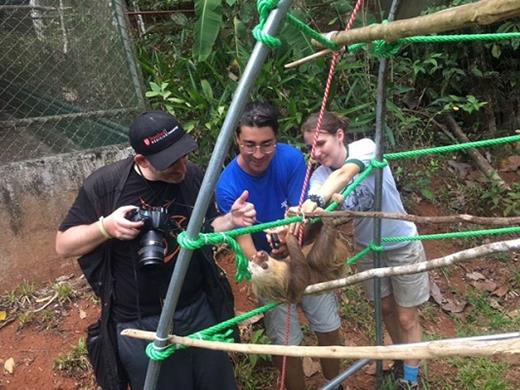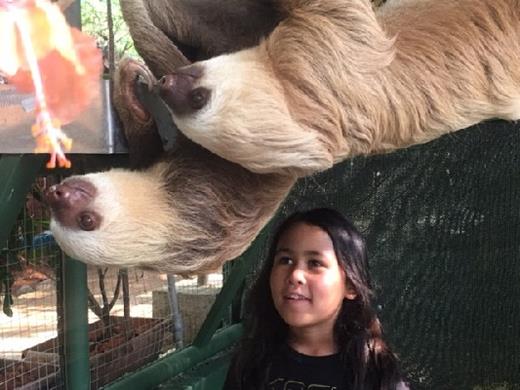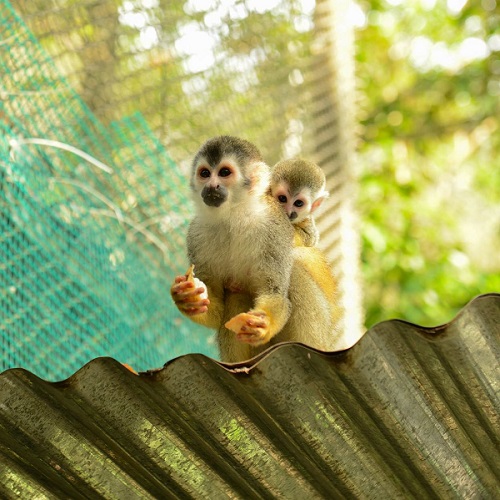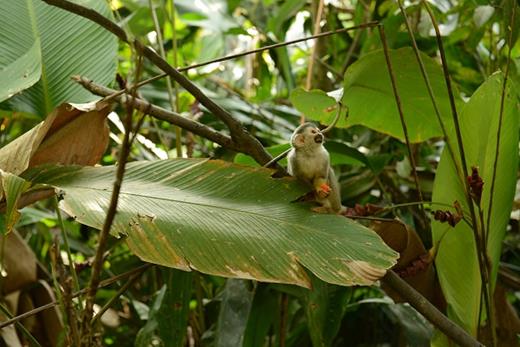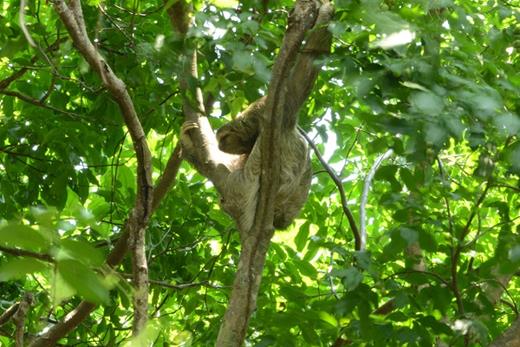Gotlib 5/1/17 Photo A
Dr. Joseph Mikhael is Chairman of the ASH Committee on Communications, and each year, he opens the Communications Committee meeting with an icebreaker question to loosen the mood and to have everyone gain a better appreciation of our nonhematology lives. Joe reminds us hematologists, that like other professionals, it is important to seek outlets outside of work to maintain balanced lives, as has been profiled in the “PASHions” column in ASH Clinical News. At the 2016 Annual Meeting, he asked us what is on our bucket list of activities and places to visit. Committee members had many interesting responses that elicited excitement about shared dreams of distant lands and exotic adventures. When my turn came, I mentioned that I wanted to spend time with sloths. To me, the room grew palpably and uncomfortably silent, and I thought I could read Joe’s thoughts, “What is it with this guy?”
Gotlib 5/1/17 Photo B
This April, I had a unique opportunity to make good on my awkward icebreaker response. I travelled to the Manuel Antonio region of Costa Rica with my wife Lenn and granddaughter Kenya. We visited Kids Saving the Rainforest (KSTR; www.kidssavingtherainforest.org), a nonprofit center whose mission is to protect the diverse wildlife of Costa Rica’s Pacific Coast by rehabilitating wildlife, conducting original scientific research, training volunteers, and promoting conservation. Unbelievably, KSTR was started in 1999 by two nine-year-old girls (Kenya’s age), Janine Licare and Aislin Livingstone, who were living in Costa Rica at the time and were concerned about the disappearing rain forest and its effects on native wildlife, such as the titi (squirrel) monkeys.
Gotlib 5/1/17 Photo C
Lenn, Kenya, and I had a wonderful day with the KSTR staff and were educated about the reasons that different animals landed in their arms for rescue, including orphaned babies, injury (e.g., electrocution burns), and an increasing number of households returning illegally obtained wild rainforest “pets” because of their inability to manage their special needs or for fear of stiff fines or prison sentences. While some species undergoing rehabilitation are candidates for release, some will never be able to thrive upon return to the wild and ultimately become more permanent residents of sanctuaries such as KSTR. In addition to planting thousands of rainforest trees, one example of a program to increase numbers of endangered species such as the titi monkey is the “monkey bridge program,” which places rope bridges over the roads of Manuel Antonio to reduce their risk of electrocution by power lines or being hit by cars.
Gotlib 5/1/17 Photo 2
As volunteers, we had an opportunity to prepare meals consisting of fruits and vegetables (and hibiscus flowers for sloths) and spend time feeding the sanctuary’s rainforest residents. While we saw various species including titi monkeys, spider monkeys, capuchin monkeys, marmosets, anteaters, parrots, hawks, and Geoffroy’s tamarins, the highlight for me was spending quality time with three sweet, smiling (and of course sleepy) two-toed sloths named Phebe, Wendy, and Issy (photos A and B). As we relayed our goodbyes, KSTR’s President Dr. Jennifer Rice was transporting back an orphaned three-toed baby sloth to their nursery to start a new life (photo C).
It was a privilege to spend the day at KSTR and to witness their dedication to protecting an endangered ecosystem. In this small corner of the world, I could take the lead of a few sloths and slow down the pace of life, away from hematology, even if just for a few hours.
Gotlib 5/1/17 Photo 1
Gotlib 5/1/17 Photo 3
Gotlib 5/1/17 Photo 4
Photos
Photo A: KSTR volunteers Aaron and Judi negotiate with two-toed sloth Issy to give back my camera's remote shutter release cord.
Photo B: Kenya looks on as two two-toed sloths maneuver into position during feeding time.
Photo C: Rescued three-toed baby sloth.

